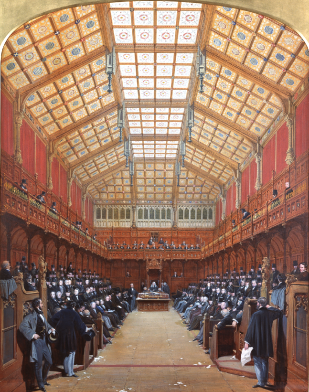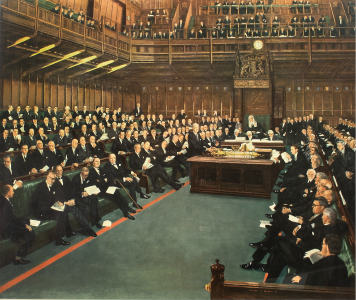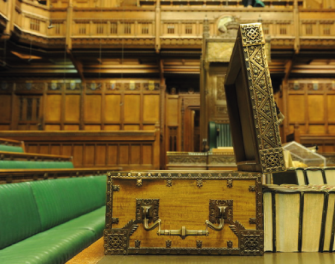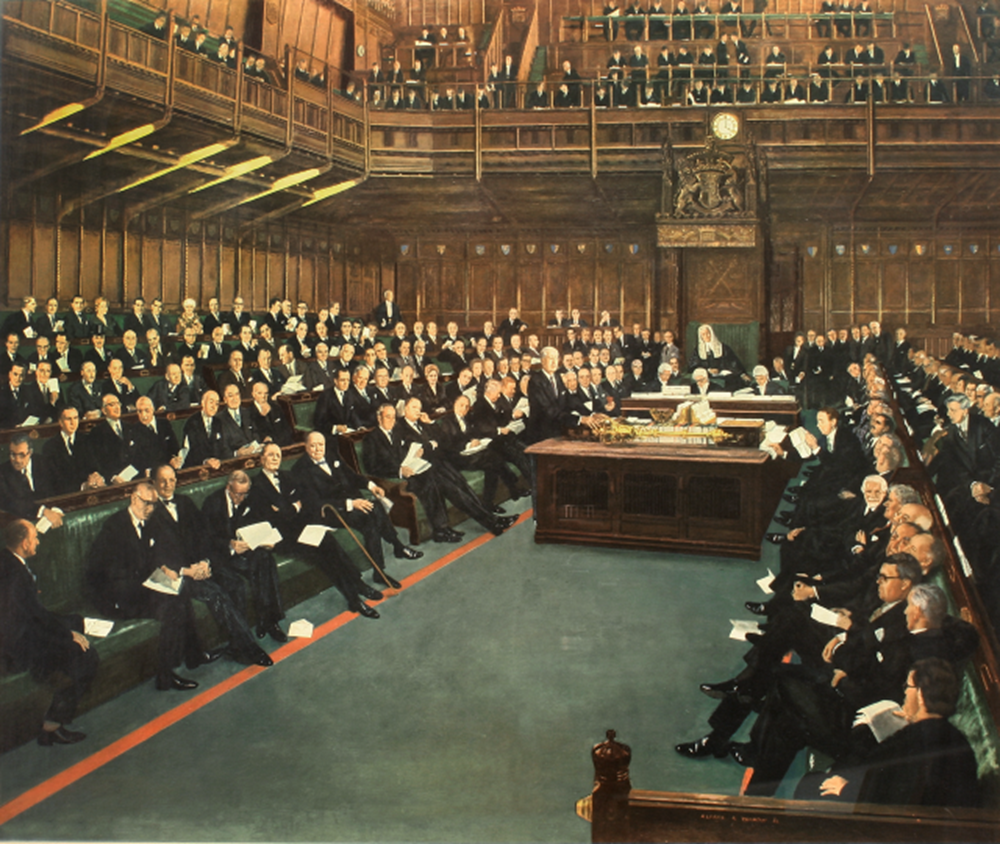Commons Chamber 70th anniversary
26 October 2020
On Monday 26 October, the House of Commons Chamber celebrates 70 years in its current form – after it was destroyed during the Second World War by a series of incendiary bombs.
On the nights of 10 and 11 May 1941, bombs rained down on the chamber and the roof of Westminster Hall was set ablaze.
The fire spread from the chamber to Members’ Lobby, causing the ceiling to collapse. By the following morning, all that was left of the Victorian chamber was a smoking shell.
The Luftwaffe attack was the biggest air raid on London during WW2, resulting in thousands of casualties and damage to the House of Lords Chamber, the Clock Tower, Westminster Abbey and the British Museum.
The destruction of the House of Commons chamber forced MPs to relocate to the grandeur and space of the House of Lords.
From there, in 1943, Prime Minister Sir Winston Churchill decreed that the Commons chamber must be ‘restored in all essentials to its old form, convenience and dignity’, insisting that the crowded intimacy of the old chamber must be replicated.
‘We shape our buildings and afterwards our buildings shape us,’ he said famously.
Sir Winston also believed that the lost chamber represented the essence of British Parliamentary democracy.
Its recreation would be an emblem for the future as symbolised by the incorporation of the surviving but burnt arch from the old chamber at its entrance.

The House of Commons, 1858, Colour bodycolour by Joseph Nash, © Parliamentary Art Collection, WOA 2934.
Work on the new chamber began in May 1945, it would cost more than £2m - almost twice the original budget.
Architect Sir Giles Gilbert Scott was faced with the challenging task of fitting additional room for MPs and visitors above an already limited space of 21 x 14 metres at floor level.
He also had to hide the latest heating, ventilation, lighting and telephony equipment behind a gothic surface, which would blend with the rest of the Victorian Palace of Westminster.
When he saw the finished chamber in October 1950, The Times’ architecture correspondent praised Scott’s technical achievements, but dismissed much of his styling as incongruous and clumsy pastiche.

House of Commons 1986, Oil painting by June Mendoza, © June Mendoza. Photo Credit: Parliamentary Art Collection, WOA 3232.
In the month when radar signals from the moon were to be a highlight of the upcoming Festival of Britain, new gothic buildings seemed to many people an anachronism.
But, 70 years later, Scott’s Commons chamber is much admired, especially for its outstanding craftsmanship, as exemplified by the Speaker’s chair. It is seen by some as a masterpiece of ‘neo gothic’.
Sir Lindsay Hoyle, the current Commons Speaker, said:
‘Our parliamentary democracy has and will endure everything that is thrown at it, be it bombs or - as we are experiencing now - Covid.
’The challenges may be very different, but 70 years on - with our chamber filled with screens and tape to enable virtual participation and keep us socially distanced - we continue to demonstrate flexibility and resolve to ensure democracy continues.’
Hansard records show that on 26 October 1950, ‘the House met in the new Commons chamber at a quarter past ten o-clock'.
Speaker Douglas Clifton Brown declared:
‘May I, as your Speaker, welcome all my fellow Members back to their old home.
‘It will seem new to many, but nonetheless it is our true home - for here have been fought and will be fought, I trust, those Parliamentary battles which have so enhanced the fame of the British House of Commons.’
King George VI presided over the opening of the new chamber on 26 October 1950, with a grand and high-profile ceremony in Westminster Hall, attended by hundreds of parliamentarians and overseas dignitaries.
Twenty-nine Commonwealth Speakers were in attendance in the Commons gallery, as MPs occupied their new green benches for the first time.
Some 56 gifts from Commonwealth countries – such as dispatch boxes from New Zealand and the inkstands from St Lucia – were and remain a strong and tangible symbol of their strong connections with the UK Parliament and the Westminster system of parliamentary democracy.
For Prime Minister Clement Attlee, the new Commons chamber stood as ‘the habitation, not merely of a number of individuals, but of the spirit of Parliamentary Government’.

Dispatch box. UK Parliament/Jessica Taylor.
